Fires can be devastating, causing extensive damage and even loss of life. As a homeowner, it’s crucial to take proactive steps to prevent fires and safeguard your property. This guide will provide comprehensive home insurance safety tips to help you minimize fire risks and ensure the well-being of your family and home.
From kitchen safety and electrical maintenance to smoking habits and heating system upkeep, we’ll delve into essential measures to prevent fires. We’ll also discuss the importance of fire escape planning, fire extinguisher usage, smoke detector maintenance, and proper storage of flammable materials.
By implementing these safety practices, you can significantly reduce the likelihood of a fire and protect your home and loved ones.
Smoking Safety
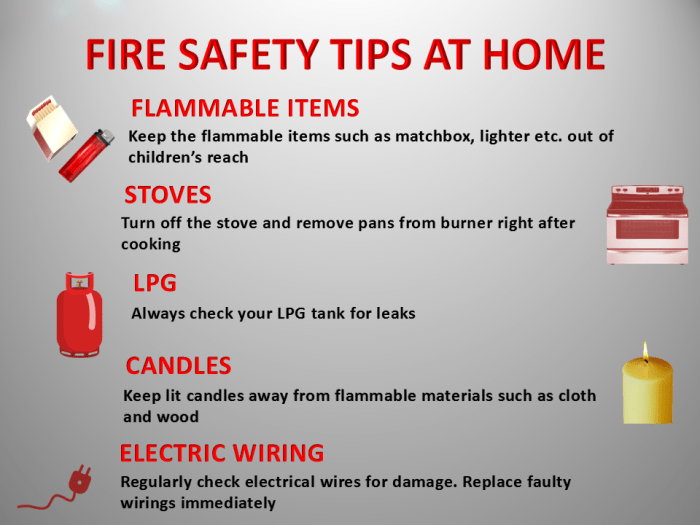
Smoking is a major cause of preventable fires in homes. By following safe smoking habits, you can reduce your risk of a fire starting in your home.
The leading cause of smoking-related fires is cigarettes that are not properly extinguished. When a cigarette is not put out properly, it can smolder and eventually ignite nearby materials, such as furniture, curtains, or bedding.
Smoking Indoors
Smoking indoors is especially dangerous because the smoke can accumulate and create a fire hazard. Smoke can also damage your lungs and the lungs of others in your home.
Safe Smoking Habits
If you do smoke, there are a few things you can do to reduce your risk of starting a fire:
- Smoke outside, away from your home and other buildings.
- Never smoke in bed or while you are drowsy.
- Use a deep, sturdy ashtray that won’t tip over easily.
- Never smoke near open flames or heat sources.
- Dispose of cigarettes properly by soaking them in water or sand before throwing them away.
Fire Escape Planning
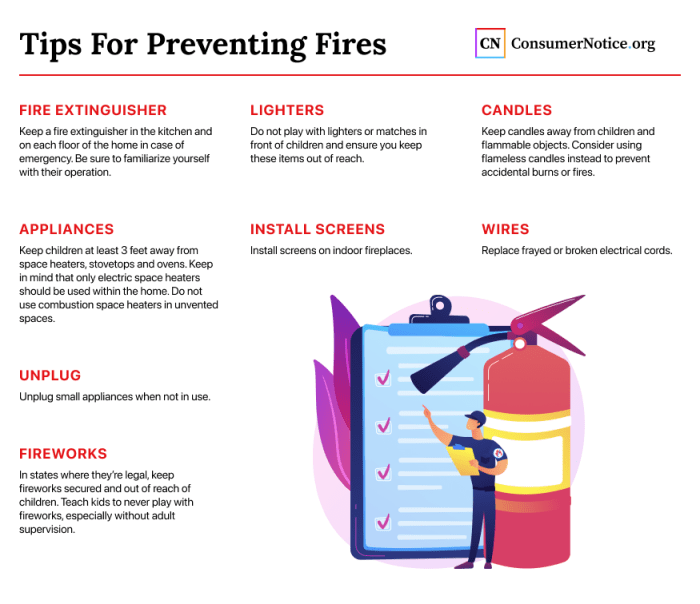
A fire escape plan is a crucial safety measure that ensures the swift and safe evacuation of household members in the event of a fire. Regularly practicing this plan helps familiarize everyone with their roles and responsibilities, minimizing panic and confusion during an emergency.
Creating a Comprehensive Fire Escape Plan
Developing a comprehensive fire escape plan involves several key steps:
1. Identify Escape Routes
Designate at least two escape routes from each room, considering different scenarios like blocked exits or smoke-filled hallways.
2. Assign Meeting Places
Choose a safe location outside the house as a meeting point for all household members to gather after evacuation.
3. Practice the Plan
Conduct regular drills to ensure everyone knows the escape routes and meeting places. Practice using different routes to account for various emergencies.
4. Educate Children
Teach children about fire safety and the importance of following the fire escape plan. Assign them specific tasks, such as helping younger siblings or pets escape.
5. Keep Fire Extinguishers Handy
Place fire extinguishers in strategic locations throughout the house, ensuring they are easily accessible and everyone knows how to use them properly.
Ensuring Familiarity with the Fire Escape Plan
To ensure everyone in the household is familiar with the fire escape plan:
1. Review the Plan Regularly
Conduct regular family meetings to review the fire escape plan and make any necessary updates.
2. Display the Plan
Post a copy of the fire escape plan in a prominent location, such as near the main entrance or in the kitchen, so that everyone can easily access it.
3. Assign Roles and Responsibilities
Assign specific roles and responsibilities to each household member, such as opening windows, turning off utilities, or assisting others.
4. Practice Drills
Conduct regular fire drills to ensure everyone is comfortable with the plan and can execute it efficiently.
Fire Extinguisher Usage
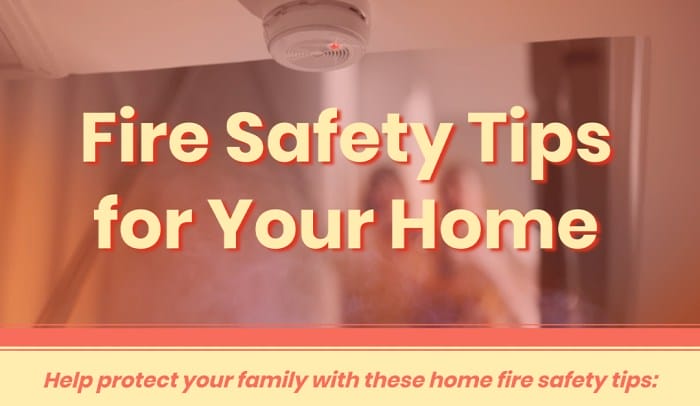
Fire extinguishers are essential tools for controlling and extinguishing fires, but using them correctly is crucial. Different types of fire extinguishers are designed for specific types of fires, and understanding their proper use can help you effectively combat various fire scenarios.
Fire extinguishers are categorized based on the type of fire they are designed to extinguish. Common types include:
- Class A: Suitable for ordinary combustible materials like paper, wood, and cloth.
- Class B: Ideal for flammable liquids like gasoline, oil, and grease.
- Class C: Designed for electrical fires involving energized equipment.
- Class D: Specifically for combustible metals like sodium and potassium.
When using a fire extinguisher, follow the acronym PASS:
- Pull: Pull the pin or handle to release the locking mechanism.
- Aim: Point the nozzle at the base of the fire, not the flames.
- Squeeze: Squeeze the handle to discharge the extinguishing agent.
- Sweep: Sweep the nozzle from side to side at the base of the fire until it is extinguished.
Regular maintenance and inspection of fire extinguishers are essential to ensure they are in working condition. Check the pressure gauge regularly, and have the extinguisher serviced by a qualified professional annually.
Smoke Detector Maintenance
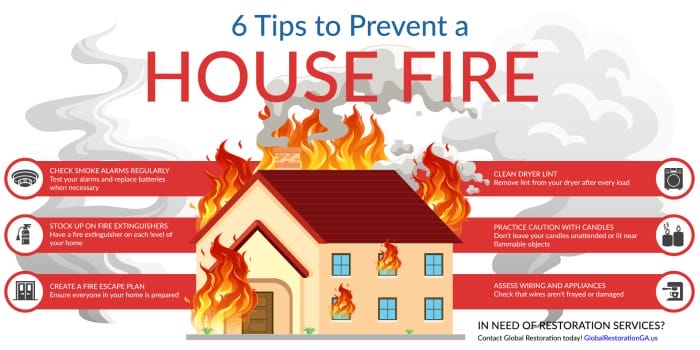
Smoke detectors are essential devices that provide early warning of fires, increasing the chances of safe evacuation and minimizing property damage. To ensure their effectiveness, proper installation, maintenance, and testing are crucial.
Testing and Replacing Batteries
Regularly testing and replacing batteries in smoke detectors is essential for their optimal functioning. Here are some guidelines:
- Test smoke detectors monthly by pressing the test button. If the alarm sounds, the detector is working properly.
- Replace batteries immediately if the alarm does not sound during testing.
- Use the correct type of batteries specified in the manufacturer’s instructions.
- Mark the date of battery replacement on the detector to keep track of when it was last changed.
Interconnected Smoke Detectors
Interconnected smoke detectors offer enhanced safety benefits by sounding an alarm throughout the entire home when one detector is triggered. This ensures that occupants in all areas of the house are made aware of a fire, regardless of where it starts.
- Install interconnected smoke detectors in all bedrooms, hallways, and common areas of the home.
- Interconnected detectors should be linked using compatible wiring or wireless technology.
- Test interconnected detectors regularly to ensure they are all functioning properly.
Placement and Maintenance
Proper placement and maintenance of smoke detectors are crucial for their effectiveness:
- Install smoke detectors on every level of the home, including the basement.
- Place detectors at least 10 feet away from windows, doors, and vents to avoid false alarms caused by drafts or fumes.
- Keep detectors clean by vacuuming them regularly to remove dust and debris.
- Replace smoke detectors every 10 years or according to the manufacturer’s recommendations.
Flammable Material Storage

Storing flammable materials safely is crucial for preventing fires in your home. These materials, which include items like gasoline, paint, and cleaning solvents, can easily ignite and cause significant damage.
To ensure the safe storage of flammable materials, follow these guidelines:
Proper Storage Methods
- Keep away from heat sources: Flammable materials should be stored away from heat sources like stoves, furnaces, and fireplaces. The heat can cause the materials to ignite, leading to a fire.
- Store in appropriate containers: Flammable materials should be stored in airtight, non-breakable containers. This helps prevent leaks and spills, reducing the risk of fire.
- Store in a cool, well-ventilated area: Flammable materials should be stored in a cool, well-ventilated area away from direct sunlight. Heat and sunlight can cause the materials to deteriorate and become more flammable.
Safe Disposal
When disposing of flammable materials, it’s essential to do so safely to avoid accidents. Here are some tips:
- Check local regulations: Before disposing of flammable materials, check your local regulations for specific guidelines. Some areas may have specific disposal requirements for these materials.
- Dispose of small quantities at a time: When disposing of flammable materials, do so in small quantities to minimize the risk of fire. Never dispose of large quantities of flammable materials all at once.
- Use a designated disposal container: Use a designated disposal container that is specifically designed for flammable materials. These containers are usually made of metal or plastic and have tight-fitting lids.
Avoid Accumulation
To prevent the accumulation of flammable materials, regularly inspect your home for any unused or outdated items. Dispose of these items promptly to reduce the risk of fire.
Home Safety Inspections
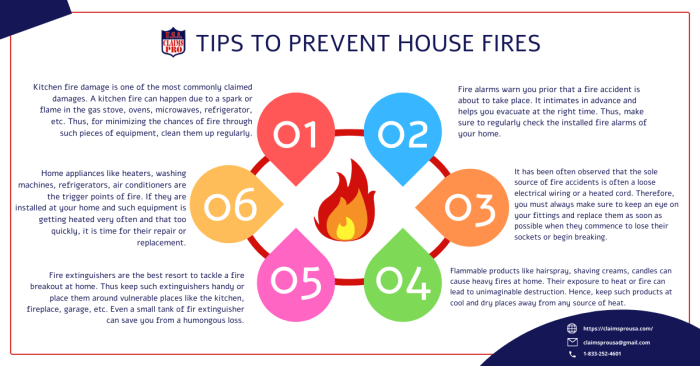
Regular home safety inspections are crucial for identifying potential fire hazards and preventing fires. These inspections should be conducted thoroughly and systematically, covering various aspects of your home’s safety features and systems.
During a home safety inspection, it’s essential to check the following items:
Electrical Systems
- Inspect all electrical outlets, switches, and wiring for signs of damage, overheating, or loose connections.
- Ensure that all electrical appliances are in good working condition and not overloaded.
- Check for any exposed wires or frayed cords that could pose a fire hazard.
Heating Equipment
- Inspect all heating equipment, including furnaces, boilers, and fireplaces, for proper installation and maintenance.
- Ensure that heating vents and flues are clean and free of obstructions.
- Check for any signs of rust, corrosion, or damage to heating equipment.
Fire Extinguishers
- Ensure that all fire extinguishers in your home are fully charged and easily accessible.
- Check the expiration dates on fire extinguishers and replace them if necessary.
- Familiarize yourself with the different types of fire extinguishers and their appropriate use.
Hiring a professional home inspector to conduct a thorough safety assessment can provide additional peace of mind and ensure that all potential fire hazards are identified and addressed.
Final Conclusion
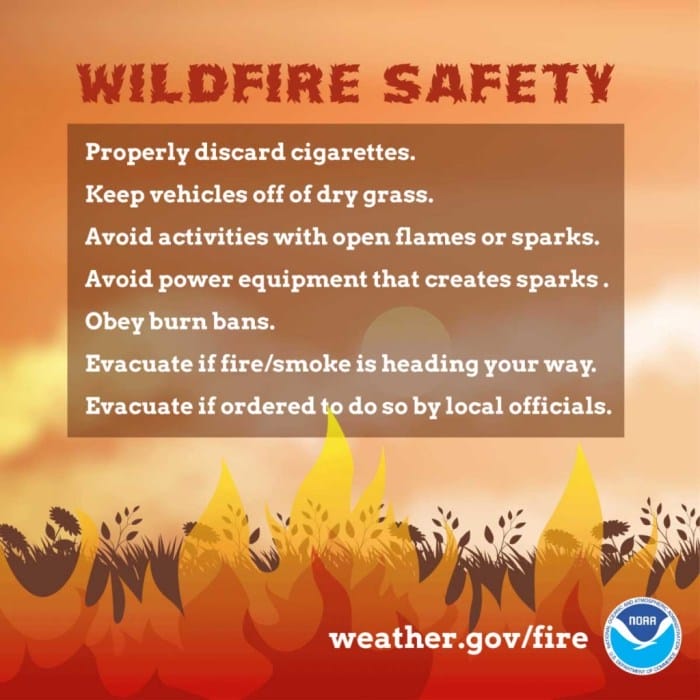
Remember, fire prevention is key to protecting your home and ensuring the safety of your family. By following the comprehensive home insurance safety tips Artikeld in this guide, you can minimize fire risks and create a safer living environment. Regular maintenance, responsible habits, and a well-prepared fire escape plan are essential elements in preventing fires and safeguarding your home.
Stay vigilant, stay safe, and enjoy the peace of mind that comes with knowing your home is protected.
FAQ Summary
Q: What are some common kitchen fire hazards and how can I prevent them?
A: Common kitchen fire hazards include unattended cooking, grease fires, and faulty appliances. To prevent these hazards, never leave cooking food unattended, keep cooking surfaces clean and free of grease buildup, and regularly inspect and maintain kitchen appliances.
Q: How can I ensure electrical safety in my home?
A: To ensure electrical safety, regularly inspect electrical wiring and outlets for signs of damage or wear, avoid overloading circuits, and use appliances according to the manufacturer’s instructions. Additionally, have a qualified electrician perform regular inspections and maintenance to identify and address potential electrical hazards.
Q: What are some safe smoking habits to prevent fires?
A: To prevent smoking-related fires, always smoke outdoors or in designated smoking areas, never smoke in bed or near flammable materials, and properly dispose of cigarettes and ashes in a safe container.
Q: How can I safely operate and maintain my heating system to prevent fires?
A: To prevent heating system fires, have your heating system inspected and serviced regularly by a qualified technician, keep heating vents and registers clear of obstructions, and never leave portable heaters unattended.
Q: What are some tips for safe candle use to avoid fire risks?
A: To safely use candles, always place them in sturdy, non-flammable holders, keep them away from flammable materials, never leave them unattended, and extinguish them completely before leaving a room or going to bed.



